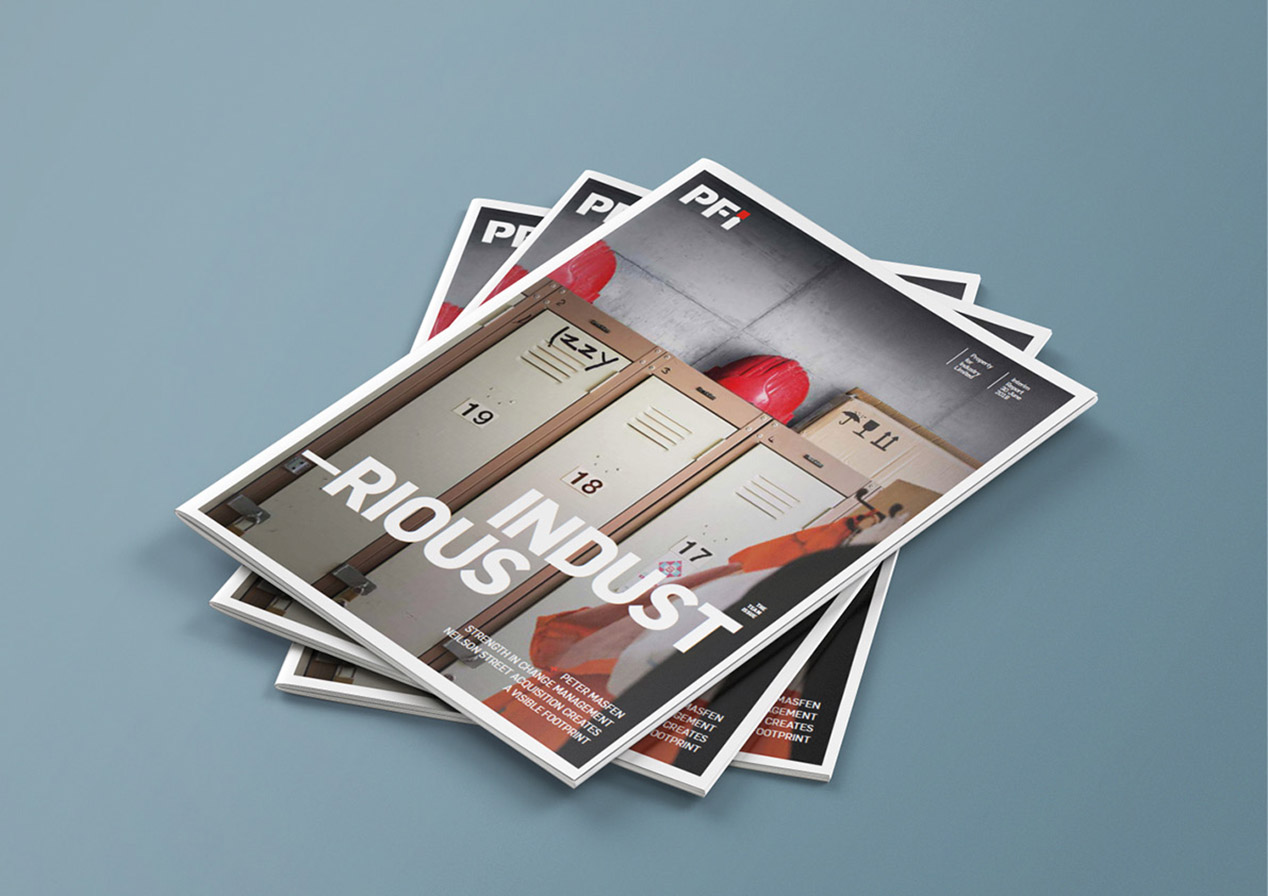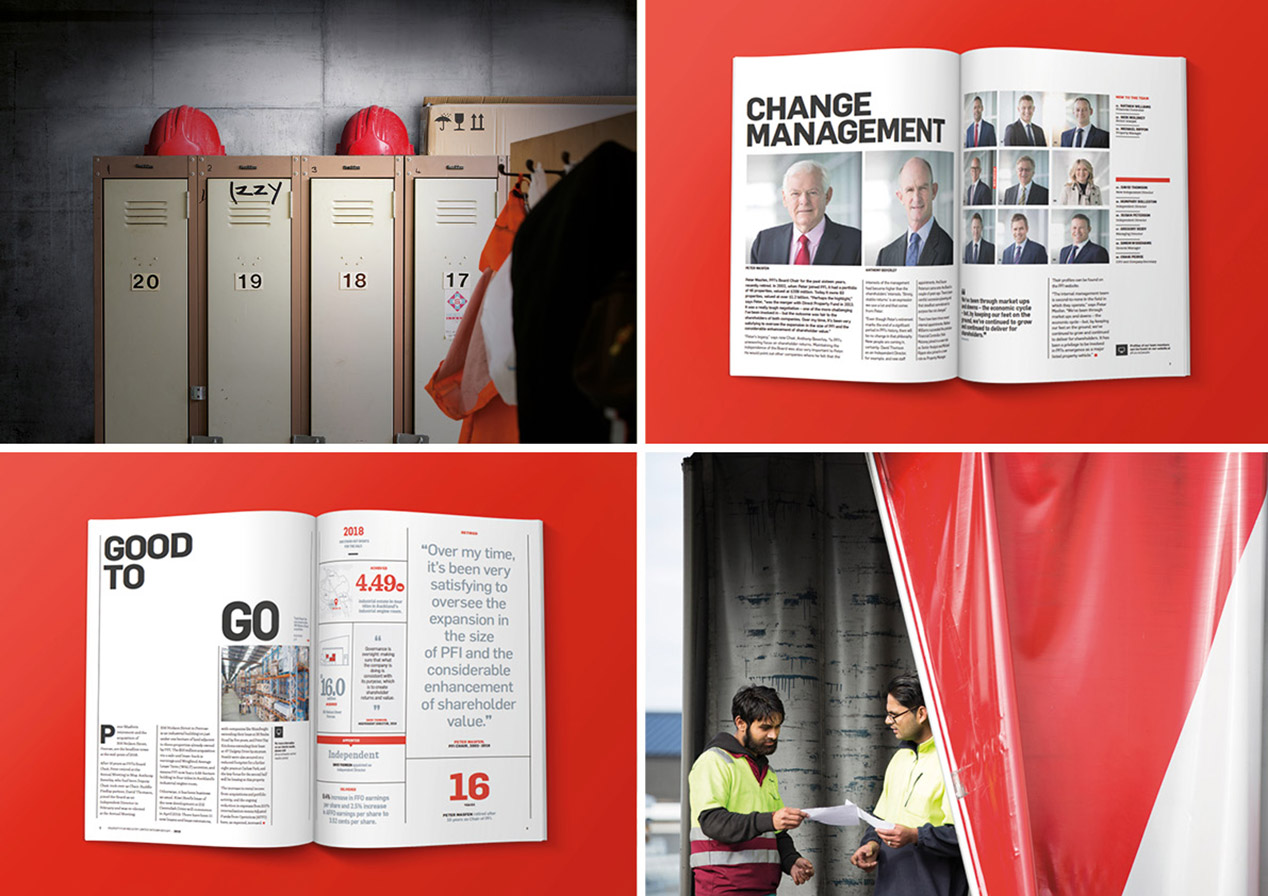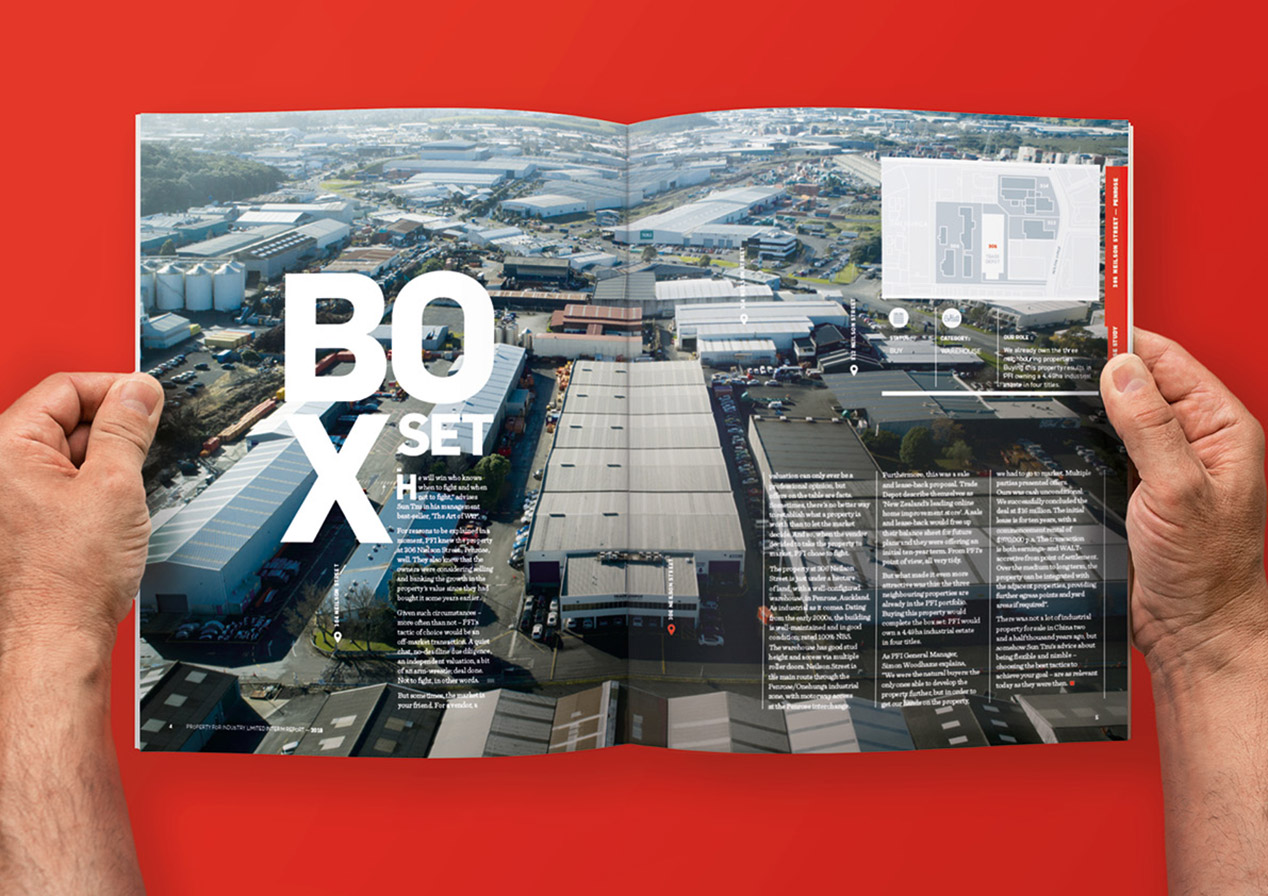Property for Industry Annual Reporting
Client: Property for Industry

“Please, let’s not do the standard, boring annual report.”
With these words, PFI gave us permission to break all the annual report conventions. And the result is a highly readable – and interesting – perspective on the difference between reporting and communicating.
The Brief
Rapid growth over the past five years has seen Property for Industry grow to a billion dollar portfolio. This new scale on the NZX saw them being scrutinised much more closely. And so the annual report evolution began. Being a small, fresh-thinking team, PFI find it easy to be creative and get new and different ideas across the line without internal conservatism holding things back.
With an open brief to eschew any convention and ‘just communicate’ without constraint, we began deconstructing the annual report and rebuilding it from a blank sheet of paper. The images here are from the most recent evolution - the 2017 annual report.
The Solution
Our first decision was to think about the investor communication as twice-yearly issues of a business magazine. Whereas tradition suggests a symphonic annual and a jingle interim, we viewed the communication opportunity as two concertos in the same format, each informing investors and the market with stories about what makes PFI tick; to pull back the curtain and show the workings, providing a consistent narrative that echoes their consistent ability to deliver strong, stable returns year after year after year.
The magazine perspective drove a number of strategic decisions that were pretty radical for an annual report:
- We ditched the Chairman’s Report and CEO’s Review.
- We ditched the Board and Management Team profiles.
- We ditched content that got in the way of our stories.
- We pared the content back to the most material.
So what do we do now, to replace these traditional annual report components?
- We direct people online for the secondary and tertiary layers of information.
- We took a highly-editorial approach: engaging articles that told interesting stories – and laid the spreads out like a magazine.
- The articles were all written ‘editorial-style’ in the third person, as if by a journalist after interviewing relevant parties (which was exactly our process anyway). So the Chairman might be quoted in part, but otherwise the ‘third party’ delivered the story
- The Chairman’s Review was replaced with an article that focuses on what the company delivered to shareholders. The CEO’s Review was replaced with an article that talked about the performance and strategies that allowed those returns to shareholders.
- Case study articles provide deep-dive insights into how the company thinks and operates, makes decisions and creates value for tenants and shareholders alike.
- Other articles may be included depending on what’s topical, interesting or backgrounds the environment within which the company operates.
The Results
Shareholders, analysts and the business media express admiration for the way that PFI communicates to the market. They like the background stories and the simplicity and easy accessibility of the document. The format has been so successful that we now adopt this purist story-telling approach in our AGM presentation scripting and structuring.



